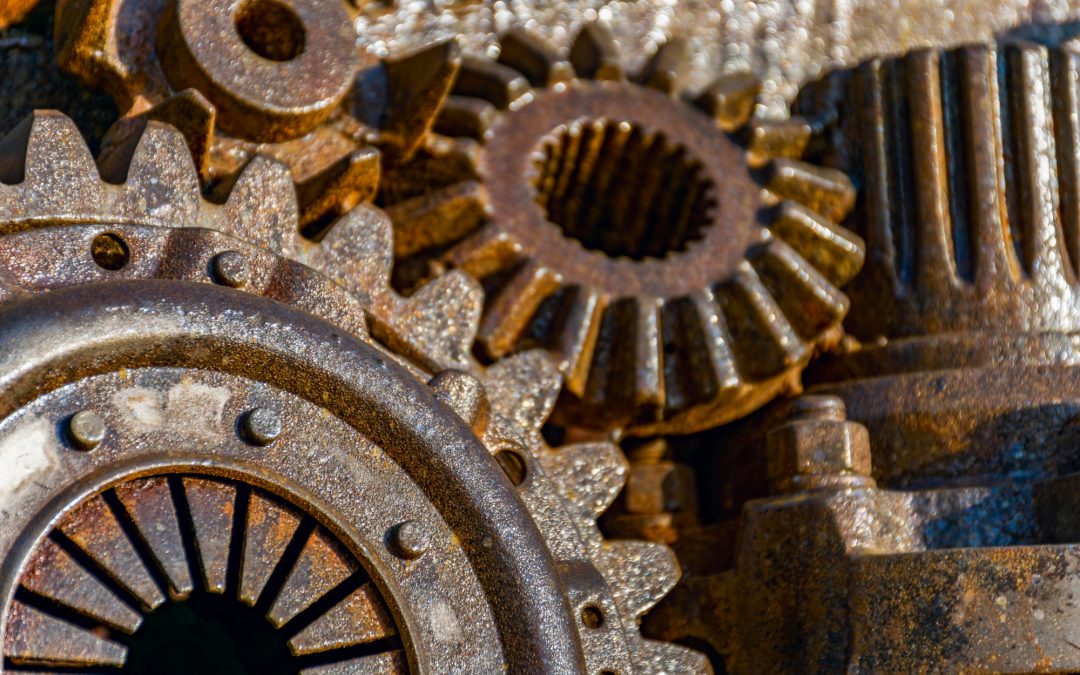Why It’s Worth Replacing Worn Parts in Winter Instead of Waiting Until Spring | GĄSKA
Winter is the time when fields rest and agricultural machines — if properly secured — stay in the barn or garage. For many farms, it’s also the best time to replace worn parts. Waiting until spring increases the risk of breakdowns, downtime, and unexpected costs at the moment when you need your equipment the most. In this article, we explain why investing in agricultural machinery parts during winter is a smart move, what benefits it brings, and how to choose components — all based on practical tips from GĄSKA.
Why is replacing parts in winter important?
Replacing worn agricultural machinery parts means planned disassembly and replacement of components that, during operation, increase the risk of failure — bearings, V-belts, chains, filters, hydraulic hoses, PTO shaft components, or mower blades. Post-season inspection and replacement are preventive actions: instead of repairing a machine when it’s already broken in the field, it’s better to replace critical elements when you have time and access to service.
Why does it matter?
Seasonally operated machines show accelerated wear of certain components.
A failure of one small element (e.g. a bearing) can lead to the breakdown of an entire unit, resulting in long repair times and high costs.
In spring, access to parts and service appointments is limited — queues at workshops and supply delays postpone the start of the season.
Neglect leads not only to the cost of parts but, above all, to losses caused by downtime and delayed fieldwork.
Key advantages of replacing parts in winter — what you gain with GĄSKA
Below are the main benefits of planned off-season part replacement. Each of them directly translates into better farm performance and lower long-term costs.
1. Reduced risk of downtime and breakdowns
Planned replacement of bearings, belts, or filters minimizes the likelihood of failures during intensive spring work. Thanks to this:
- You avoid sudden field breakdowns and costly emergency repairs.
- Your machine starts the season fully operational — without unexpected interruptions.
2. Lower operating costs in the long term
Early replacement of small components often prevents damage to more expensive ones (e.g. a gearbox failure caused by a damaged bearing). By investing in parts now:
- You save on major repair costs.
- You can negotiate better off-season prices when demand is lower.
3. Better planning and component availability
In winter, parts availability is higher and service times are shorter. This means:
- You can order original parts or high-quality replacements without time pressure.
- Easier logistics and better organization of mechanic work.
4. Increased work safety and equipment protection
Efficient brakes, reliable hydraulic systems, and solid mountings minimize the risk of accidents during intensive use. This translates into:
- Reduced risk of damage and accidents.
- Longer machinery lifespan.
5. Opportunity for modernization and optimization
Since winter work is less urgent, it’s the perfect time to consider upgrades: better bearings, more efficient filters, improved housings, or stronger belts. It’s an investment in performance for the next season.
How to recognize quality parts and where to find them?
Choosing the right parts is crucial. Below are practical tips on what to look for.
1. Manufacturer reputation and certifications
A good manufacturer provides technical specifications, standards, and certificates. It’s worth choosing brands known for durability and available service support.
2. Materials and workmanship
Pay attention to materials (e.g. hardened steel, high-quality rubber, good seals) and precision. Cheaper alternatives may look appealing, but their lifespan is often shorter.
3. Compatibility with the machine and specifications
Parts must match the machine model and manufacturer specifications (dimensions, torque, tolerances). Check part numbers, cross-sectional diagrams, and compatibility.
4. Warranty and service
Choose suppliers offering after-sales support and warranty. GĄSKA provides professional advice and technical assistance — reducing the risk of mistakes during purchase.
5. Local warehouse and availability
Buying in winter gives you access to better availability and faster delivery. A reliable partner like GĄSKA helps you assemble post-season part kits and plan maintenance efficiently.
Practical action plan — step by step before spring
Post-season inspection
Check bearings, belts, filters, hydraulic hoses, knives, and blades.
Priority list
Create a list of critical parts that require immediate or prioritized replacement.
Winter orders
Order parts off-season — better prices and availability.
Perform service work
Carry out replacements in the workshop or through a mechanic — preferably before busy periods.
Spare parts storage
Maintain a small stock of critical components (e.g. bearings, filters, belts) to react quickly if needed.
Summary — a smart decision for farm stability
Replacing worn parts in winter is an investment that pays off: lower risk of downtime, reduced repair costs, better planning, and greater work safety. Acting proactively off-season gives you peace of mind and ensures your equipment will be ready for intense work when the sowing and harvesting seasons begin.
Don’t risk costly downtime — choose proven solutions. Check the offer of agricultural machinery parts at GĄSKA, order post-season parts, and consult our specialists. Call or write — we’ll prepare a list of recommended components and help you plan a maintenance schedule so your season starts smoothly.
Visit GĄSKA or contact our technical advisor — secure your season today.

Recent Comments